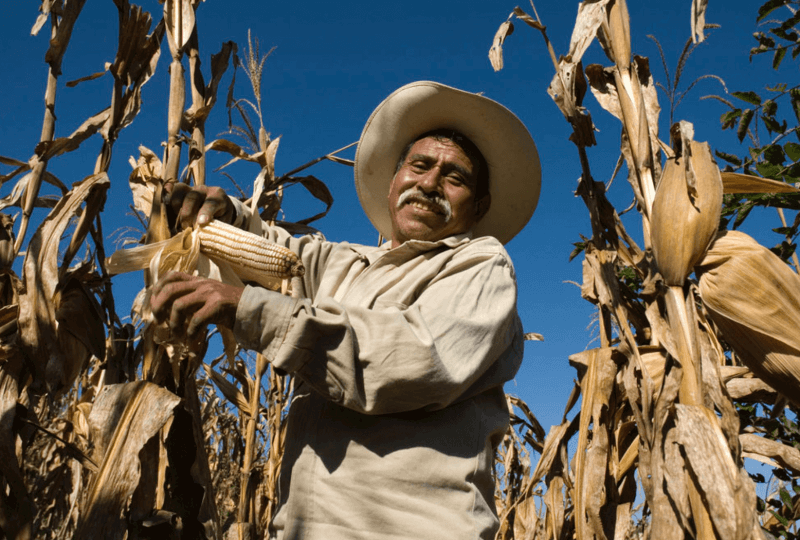Apart from their prominence in world soccer, Brazil and Argentina continue to consolidate their position as the world’s second and third-largest producers of GMOs, respectively.
Paraguay, Uruguay, and Bolivia are major producers of GM soybeans, and Chile maintains its position as the main GM counter-season seed nursery in the southern hemisphere.
The region’s seven countries — Argentina, Chile, Brazil, Paraguay, Colombia, Honduras, and Guatemala — are also leading the advance in regulations that allow the commercial release of gene-edited crops. Uruguay is likely to join soon.
Despite the delays caused by the Covid-19 pandemic, and the international threat to food supply caused by the Russia-Ukraine War, the research and release of GMOs and gene-edited crops in Latin America continued steadily.
Here are the main milestones in the region during 2022
Argentina and the world’s first GM wheat
Not only were they crowned champions at the FIFA World Cup in Qatar, but Argentina also won the complex race to bring the first GM wheat into the market, after previous failed attempts in the United States.
The drought-tolerance HB4 finally reached the Argentine fields after Brazil approved the import of HB4 flour at the end of 2021. This was the requirement when Argentina conditionally approved the HB4 wheat in 2020.
Although this development — born in the Argentine public sector and brought to the market by a local company, Bioceres — seemed to have a free hand after the Brazilian approval, it wasn’t easy as some unions of exporters and producers complained about a possible loss of market.
Given these concerns, Bioceres explained that it has controlled sales policies and traceability and biosafety regulations, with its first 250 clients producing HB4 in the field.
On the other hand, the international scene played favorably for HB4 wheat with consumption/import approvals from Colombia, the United States, Nigeria, Australia, and New Zealand.
According to the CEO of Bioceres, they expect to get commercial approval in Australia and New Zealand this year.
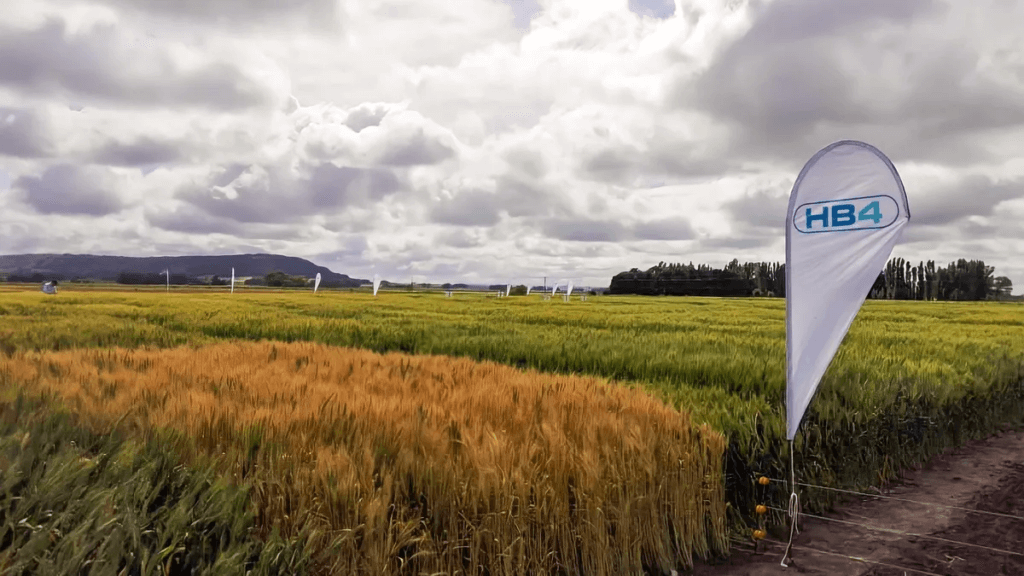
The HB4 soybean, also from Bioceres, obtained commercial approval in China — the leading global importer of soybeans — which joined the United States, Brazil, Paraguay, and Canada that had already approved this GM crop.
Another crop that continues to advance in Lionel Messi’s homeland is a gene-edited potato by a team of researchers from the public sector INTA and CONICET. It has a non-browning trait that prevents food loss and waste.
This GE potato is already in its second field trial as requested by INASE, and will enter the varietal registry after the third field trial.
Dr Cecilia Décima, one of the leading researchers in this project talks of a remarkable fact that corresponds to the time to market: about five years on average from its start in the laboratory thanks to clustered regularly interspaced short palindromic repeats (CRISPR).
Five years is less than half the time it would take with conventional breeding.
At the private level, GDM developed a drought-tolerant edited soybean variety, which achieved a historic milestone by receiving the “green light” for commercial use in Argentina and Brazil in 2022.
The same company developed an edited soybean which is low in certain types of sugars that are indigestible by humans and monogastric animals.
The soybean was approved in January 2023.
Also noteworthy is the international scaling achieved by the Argentine startup Bioheuris, which focused on weed control by developing a technological platform with CRISPR gene editing for the herbicide tolerance trait.
They work on several extensive crops such as soybeans, corn, rice, cotton, alfalfa, sorghum, peanuts, and sunflowers.
In 2022, it was highlighted by StartUs Insights among the top five agro-tech startups in the world, and also, after closing a Series A investment round for $4 million, they moved their laboratories to the United States.
Brazil is at the forefront of local developments
The Amazonian giant, second only to the United States in GM hectarage, made history in 2021 when it released a GM bean resistant to the golden mosaic virus (read more about this story here) which can destroy fields and has no conventional control methods.
This development, co-led by scientist Francisco Aragao from the state institution EMBRAPA, is focused on small-scale Brazilian farmers and was well received by consumers.

In the context of the shortage and price hikes of wheat and other grains due to the war in Russia-Ukraine, EMBRAPA also began to conduct field trials to test the agronomic performance of HB4 wheat.
According to public surveys, the Brazilian consumer — already accustomed to the local GMO labeling system — showed a high acceptance rate (71 percent) for the consumption of HB4 wheat.
Another crop that saw positive progress is GM sugarcane developed by a Brazilian company, the Sugarcane Research Center (CTC), with the trait of resistance to the cane borer pest.
In 2022, it was reported that Brazilian farmers almost doubled the area under this GM sugarcane.
When it comes to gene editing, Brazil is not far behind.
The National Technical Commission on Biosafety (CTNBio) approved two EMBRAPA crops: Cana Flex I and Cana Flex II, which are edited — transgene-free — varieties that show greater digestibility of the cell wall and higher sucrose concentration in plant tissues, respectively.
There is also a gene-edited soybean in which an anti-nutritional factor was silenced, facilitating its digestion in humans and animals.
EMBRAPA has a broad range of crops — such as soybean, corn, and wheat — that are being improved with CRISPR, highlighting the traits of elimination of anti-nutritional compounds, better oil quality, and drought tolerance.
Chile: From global GM nursery to CRISPR innovation
Cloistered between geographical barriers that allow it to have ideal phytosanitary and climatic conditions for seed production, Chile has established itself among the top five global seed exporters, and the main producer of GM seeds in the southern hemisphere.
It has also specialized as a provider of research and development services in GM crops.
Many commercial GM crops in the world were at some point tested in field trials in Chile.
The country lives in an eternal contradictory regulatory situation since it is allowed to do almost everything with GMOs.
That includes the multiplication of seeds for export, field trials, research and development, and import of GM grain and food import.
However, it still maintains legal loopholes that don’t allow commercial use by local farmers, a situation that will continue after the pronouncement by the Minister of Agriculture that the new government will not be moving forward with GMOs.
This means that, unfortunately, highlighted developments such as drought-tolerant corn, or citrus rootstocks that grow in the desert and saline soils — developed by Chilean universities — won’t make it to the field to help farmers face the severe drought and climate challenges.
The situation for gene-edited crops is different and it is living a fruitful time facilitated after the establishment of the second world regulation — after Argentina — that allows the normal release of crops that don’t carry the transgene in the final product.
One of the most notable initiatives is the PASSA Project, carried out by two universities and the state institution INIA, which is developing kiwi and tomato rootstocks that grow in saline soils with little water.
The project experienced certain delays due to the pandemic.
But Dr Claudia Stange, project director, said that they are in the in-vitro culture phase and the gene-editing was successful in both cases.
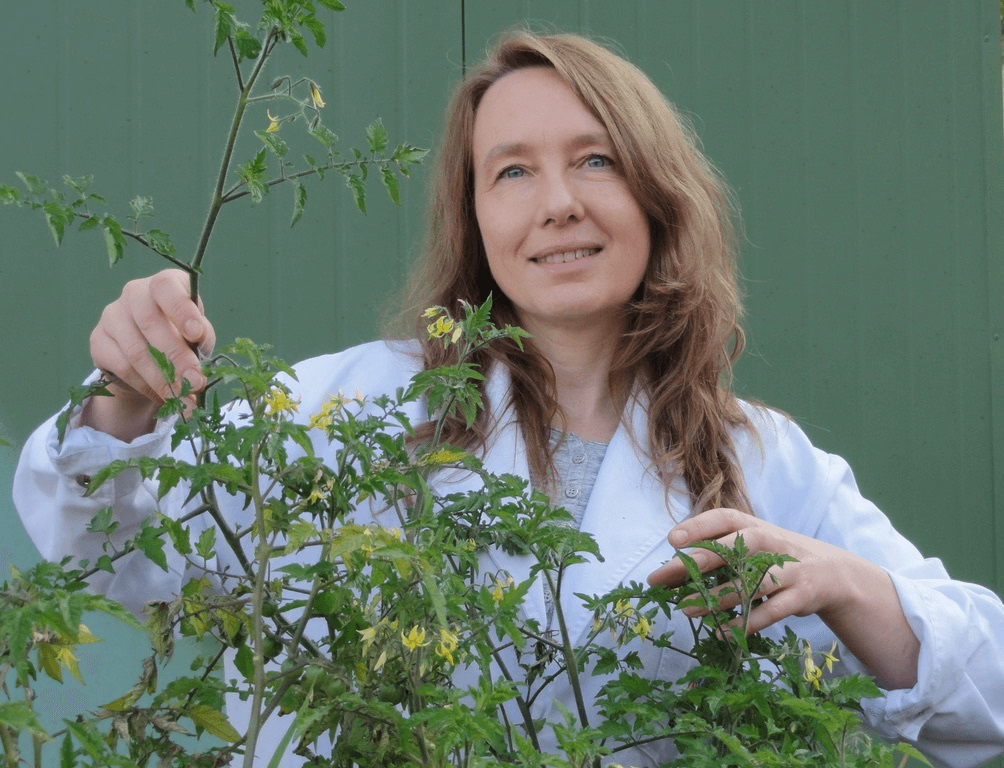
Dr Stange is also leading the development of a golden apple, high in beta-carotene and non-browning through CRISPR, at the University of Chile in partnership with the Biofrutales Consortium.
She said they have selected GE plants without transgenes and already grafted them and they will be taken to the field this year.
Despite the delays caused by the Covid-19 pandemic, and the international threat to food supply caused by the Russia-Ukraine War, the research and release of GMOs and gene-edited crops in Latin America continued steadily.
Due to the importance of Chile’s export fruit industry, and the search for new varieties and national genetics to face climatic and post-harvest challenges, other projects in this area include the recent All Grape patent granted to INIA and Biofrutales Consortium.
The project will generate gene-edited lines of table grapes, and possibly other fruit species.
The well-known Viña Concha y Toro is also working with INIA on a cell expansion platform as a first step to developing gene-edited clones of selected grape varieties.
In the south of the country, the startup Neocrop Technologies developed a record-time breeding platform, applying CRISPR and other precision technologies, which seeks to reduce the registration/release of new varieties from 10 to 12 years to only four or five years.
This platform made them winners in one category of the National Innovation Awards of the Chilean Ministry of Science and Technology in 2022.
In association with a Chilean and an Argentine seed company, they are developing commercial wheat with 10 times more fiber which is advancing to field trials this year.
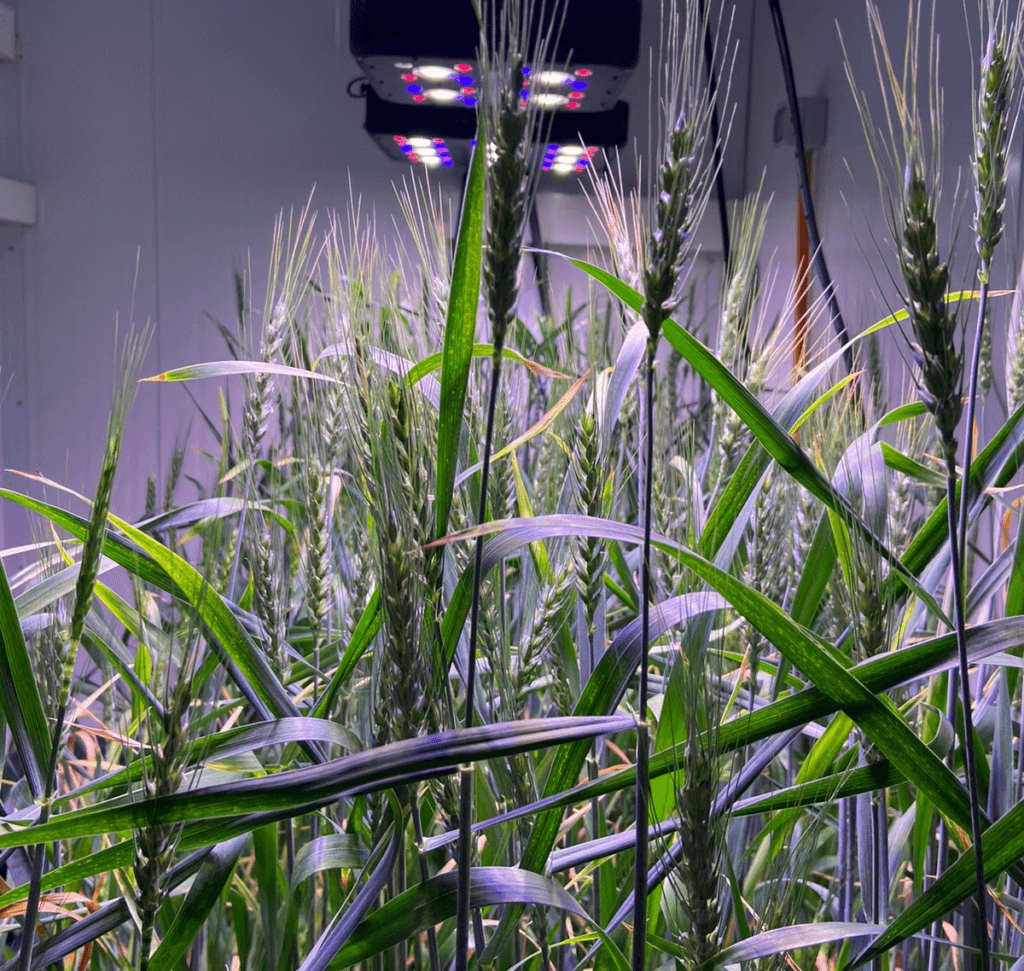
When asked about approvals for GE crops, ChileBio’s executive director, Dr Miguel Angel Sanchez, said that “Chile is the Latin American country with the highest number of positive evaluations for field release of gene-edited plants.”
He stated that up to November 2022, Chile authorized 17 GE products, Argentina 14 GE products, and Brazil five GE products.
Dr Sanchez added that in the Chilean case, the approved products include canola, soybean, camelina, corn, and tobacco, and the traits are diverse: better yield, oil composition, quality, growth habit, and disease resistance.
Cuba: Breaking the “multinationals” narrative
One of the myths still recycled about GMOs is that this technology is “monopolized by big companies” from “capitalist countries.”
The Cuban experience elegantly destroys this rhetoric.
Though the island has been under a repressive regime of socialism for decades, Cuba has seen biotechnology as an important development tool for its farmers and food security.
In the 1980s, Fidel Castro began to manage a biotech pole on the island, led by the Center for Genetic Engineering and Biotechnology of Havana (CIGB) in the case of plant and animal research.
During the past decade, a pilot harvest of Bt corn and RR soybeans from the CIGB began to scale up and in 2021, the National Commission for the Use of GMOs was established.
All of that was carried out to facilitate the small Cuban farmer to adopt agro-ecology and GM crops together, and also to reduce the huge costs of food imports.
In a webinar organized in August by ChileBio, Dr Mario Pablo Estrada, the Director of Agricultural Research at CIGB, stated that they hope to have between 50 and 100 thousand hectares under locally developed Bt corn and RR soybeans by 2024.
He said he is working with EMBRAPA (Brazil) to apply gene-editing in beans and revealed that they will inaugurate a state company dedicated to the GM seeds multiplication for Cuban farmers.
Bolivian farmers demand new GMOs… again
There are two stories that are repeated every year in the Andean country: unions and farmers demanding the government’s commercial authorization of new GM crops, and the illegal use of Bt corn and a non-approved RR soybean.
Last year was no exception as communities and farmers’ unions wanted the new soybean approved.
Currently, Bolivia harvests a rather old RR soybean from more than 1.8 million hectares per year.
Given the lack of approval for new GM crops, many farmers plant imported GM grain, used for animal feed, from neighboring countries, at the risk of penalties and fines.
Probably the only advance was the drought-tolerant HB4 soybean biosafety approval for field trials, something that led to complaints by activists.
Studies reaffirm coexistence and benefits
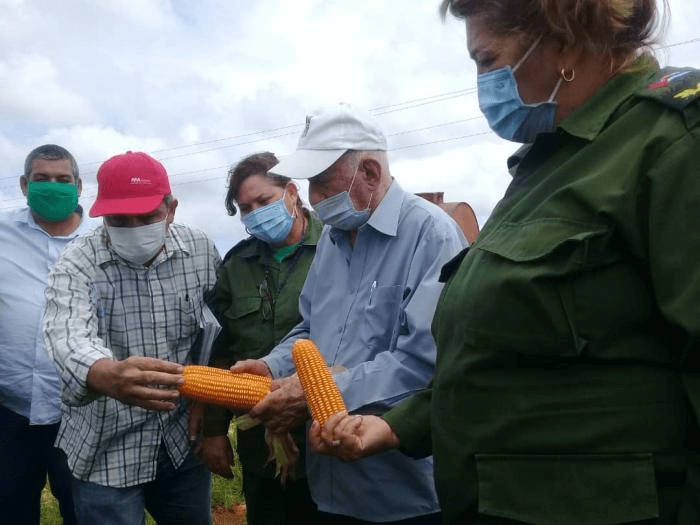
Some regional studies including one prepared by Chilean scientists indicate that the seed industry in Chile has been successful in the voluntary implementation of a strict strategy of coexistence between different varieties of seeds belonging to the same species, such as GM and non-GMO seeds.
Another study promoted by Paraguay’s Institute of Agricultural Biotechnology (INBIO), in collaboration with the Argentine Grain Exchange and the Institute for International Agricultural Negotiations Foundation (INAI), demonstrated that Paraguay has immensely benefited after 25 years of commercial adoption of GMOs.
Some of the benefits are the reduction of carbon emission and its greater accumulation in the soil, less use and toxicity of applied phytosanitary products, and higher crop production per hectare.
Attempts to ban GMOs fail in Mexico and Colombia
Apart from the good news, we also have to look at the negative ones.
There was a controversy in Colombia with the third attempt to present a draft legislative act in the House of Representatives, to modify Article 81 of the Constitution to “prohibit the entry, production, commercialization, export, and release of genetically modified seeds.”
The project failed after it was criticized by farmers and academics as it would have caused environmental and socioeconomic damage to a country that grows Bt corn and GM cotton and has several research and development centers in universities and public institutions.
Mexico has had more serious problems. In recent years, no new cotton or soybean has been approved and this has led to yield loss.
Last year, President Andrés Manuel López Obrador decreed a ban not only on GM corn commercialization but also on its importation, a move that even violates the conditions of the T-MEC Treaty with the US and Canada.
That move is surprising since Mexico is not self-sufficient in this staple crop and must import three-quarters of its requirements, with the USA being its main supplier, yet practically all US corn is GM.
Before this decision, there were already reports about the damage it would cause, like making corn tortillas more expensive, increasing food insecurity, causing job losses, and generally affecting ranchers.
The good news, for the moment, is that Andrés Manuel López Obrador and US president Joe Biden reached an agreement and the ban was lifted.
Pure life in Qatar
In 2020, for the first time, a fancy pink pineapple went on sale in the United States. This GM fruit was developed in Costa Rica by the Del Monte company for export.
It applied genetic engineering to increase a healthy antioxidant with potential anticancer properties — lycopene — thus generating its pink color and greater sweetness.
Regarding the World Cup, Costa Rica began exporting this pineapple to Qatar in 2021, increasing its monthly shipments to 361 pineapples in 2022, at an approximate price of $35 per piece.
The company currently ships to the United Arab Emirates, Saudi Arabia, the United States, Canada, and Hong Kong.
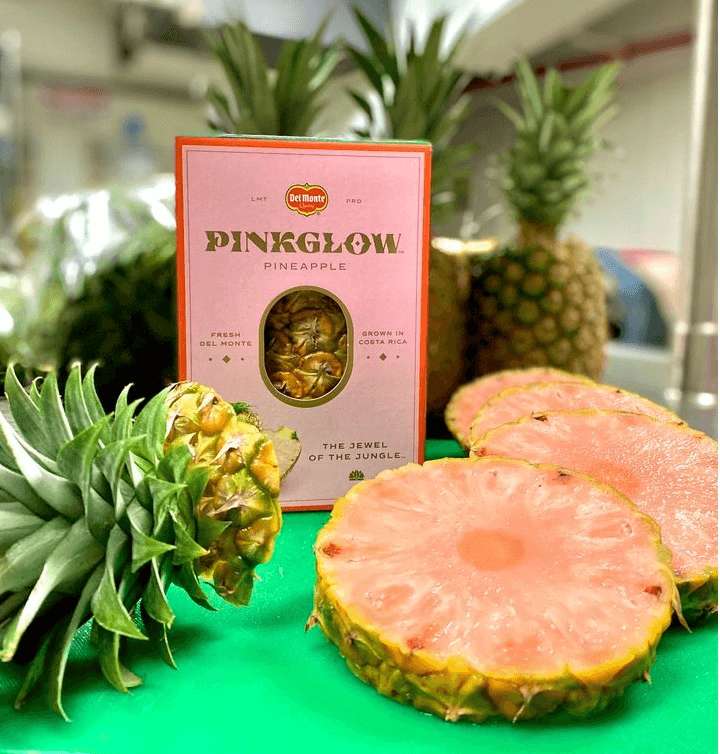
Daniel Norero is a consultant in scientific communication at agricultural biotechnology and food-tech institutions. Daniel studied biochemistry at the Catholic University of Chile and has worked as a laboratory assistant in plant sciences. Follow Daniel on X @DanielNorero
A version of this article was originally posted at Alliance for Science and has been reposted here with permission. Any reposting should credit the original author and provide links to both the GLP and the original article. Find Alliance for Science on Twitter @ScienceAlly

